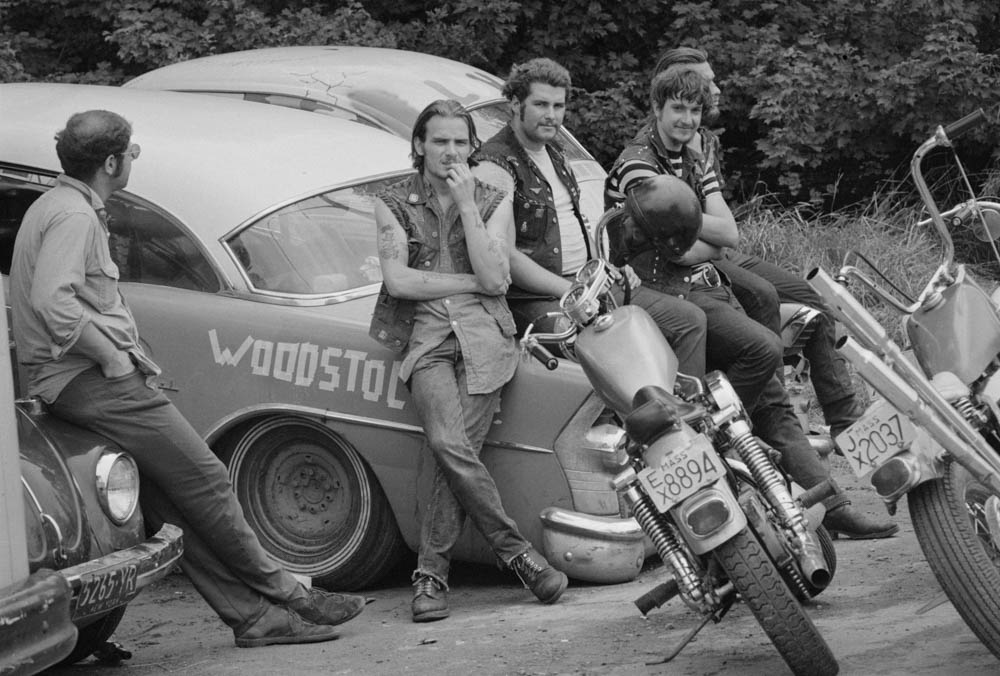When the American photographer Roger Ballen named his 2018 retrospective book “Ballenesque,” the title immediately conjured his distinctive aesthetic. His best-known images are unsettling portraits of people on the fringes of society, taken in interior spaces, the walls of which Ballen has covered with primitive drawings.
But long before he made his reputation in the art world, Ballen, who has made South Africa his home for nearly 40 years, found himself in a very different place, photographing a very different subject: Woodstock.
In the summer of 1969, Ballen was home in Westchester County after completing his first year studying psychology at the University of California, Berkeley. He went to Woodstock not just to enjoy the music but to document his experience. Already a budding photographer — his mother worked for the storied photo agency Magnum, and for a high school graduation gift, his parents gave him a Nikon FTN — Ballen shot three rolls of film at the festival. But he only ever published one of the photographs.
Curious about what Woodstock looked like through the eyes of an aspiring 19-year-old artist, we asked Ballen to return to the negatives, which he hadn’t looked at in 50 years.
“It was a jolt to the memory,” he said. “I was so excited. It’s like finding gems in the sand. It’s one of the nicest feelings that you can have when you’re involved in the history of your own work, to find things that you ignored or forgot about or didn’t come to terms with. And the fact that 50 years have gone by, which is also hard to reconcile.”
In a phone interview from Johannesburg, Ballen talked about the stories behind some of the photos and how that experience influenced his work. These are edited excerpts from the conversation.

Motorcyclists, Woodstock 1969
How did you end up at Woodstock?
I joined this camp called Camp Mohawk — it was in Westchester [N.Y.]. somewhere and I became a counselor there. There was this family day, and we had the children make the peace sign and say, “peace now, peace now.” We all got fired. A week later, Woodstock happened and I went up with one of the other counselors that got fired. I borrowed my mother’s car. It was a red Chevrolet station wagon. If you put down the seat in the middle, you could sleep in the back.
Do you remember watching any shows?
Oh, yeah, Janis Joplin. I remember most of them. The sound wasn’t amazing, and there was also a lot of crowds. It was hard to get around. There were no pathways where people were supposed to walk, so everybody was huddled around. To get food or go to the toilet, you had to walk over people. That was one thing that stuck in my mind. The other was there was a funny, awful smell in the mud. I don’t know what it was from, if it was fertilizer or a sewage problem or something. I remember people were passing around pills that they were saying was acid. There were pink ones and green ones. I thought to myself, it’s stupid to take something that you have no idea what’s in these. It could be arsenic for all I know.
What was it like photographing in a time when not everybody was doing it?
A person carrying a camera like that, a Nikon — you had to know something about what you were doing. It wasn’t something you could just pick up. Also, I was using film. It was black and white, so you had to process it and you had to know something about the speed of film and lighting. If you were more amateurish, you might buy a small Kodak camera that had a flash in it or take some Polaroid pictures. I was a stranger in that environment, but people were more comfortable being photographed, maybe because they were part of an event, and maybe felt they were making some sort of historical statement.

Comments are closed.